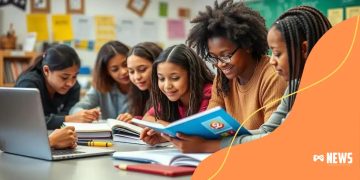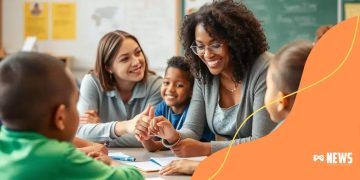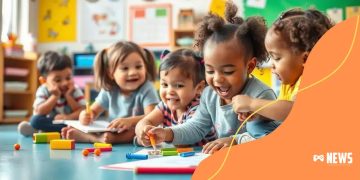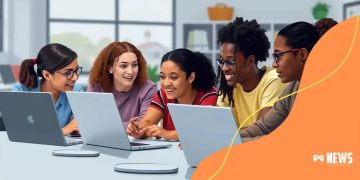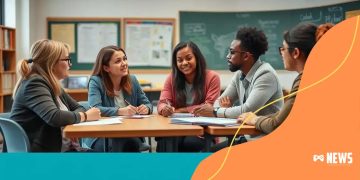Special education services: how to support diverse learning needs
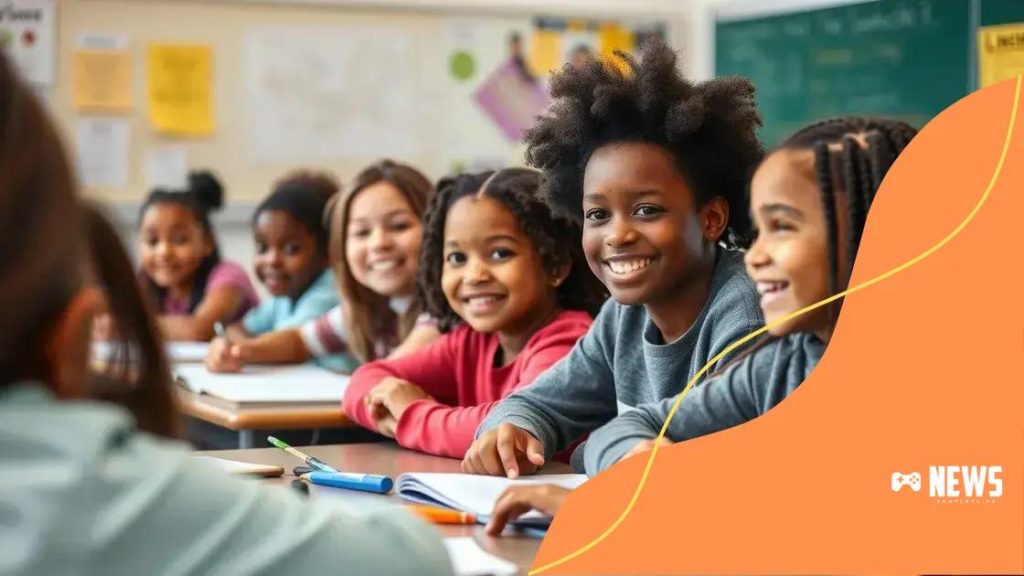
Special education services provide tailored support to meet the diverse learning needs of students, ensuring their academic and social-emotional success through collaboration among educators, families, and specialists.
Special education services play a crucial role in supporting students with varying learning needs. Have you ever wondered how these services can change lives and enhance educational experiences? Let’s dive into this essential topic.
Understanding special education services
Understanding special education services is essential for creating an inclusive learning environment. These services cater to students with unique needs, ensuring they receive the support necessary to thrive academically.
First, let’s explore what these services include. Special education services provide tailored instructional methods, resources, and support systems. This approach helps address various disabilities and learning differences among students.
Types of Special Education Services
There are several types of special education services available:
- Individualized Education Programs (IEPs)
- 504 Plans for accommodations
- Specialized teaching strategies and interventions
- Collaborative teaching models
These services are designed to ensure that all students can access the general curriculum effectively. By law, schools must provide appropriate programs to help students succeed.
Another crucial aspect to understand is how special education is implemented. First, students are evaluated for eligibility, which involves assessments and observations. Once eligible, they receive a tailored educational plan that outlines their specific needs and goals.
Collaboration in Special Education
Collaboration is key in special education. Teachers, parents, and specialists work together to create effective learning strategies. This team approach ensures the best possible outcomes for students.
Ultimately, recognizing and understanding the importance of special education services can lead to more supportive and enriching educational experiences for all learners. By embracing these services, we open doors to opportunities for students to reach their full potential.
Identifying diverse learning needs
Identifying diverse learning needs is a vital step in delivering effective education. Every student learns differently, and recognizing these differences is key to helping them succeed.
Teachers must look for various signs that indicate a student may have a unique learning need. These signs include challenges with reading, writing, or math skills. Additionally, students may struggle with focus or social skills, which can impact their learning experience.
Signs of Diverse Learning Needs
- Difficulty following instructions
- Inconsistent performance in class
- Struggles with organization and time management
- Issues with social interactions
To address these needs, teachers use different methods to assess their students. They may conduct observations, administer assessments, and gather input from parents and specialists. This collaborative approach helps create a clear picture of each student’s abilities.
As teachers gather data, they can develop strategies tailored to each student’s needs. These may include differentiated instruction, accommodations, or specialized support. By focusing on each learner, educators can create an inclusive environment that fosters success.
The Role of Assessments
Assessments play a crucial role in identifying diverse learning needs. They can reveal students’ strengths and weaknesses, helping teachers adapt their lessons. This process ensures that every student gets the right support to thrive in their education.
Ultimately, understanding and identifying diverse learning needs lead to better educational experiences. When teachers are equipped with the proper tools and knowledge, they can significantly impact their students’ lives.
Effective strategies for supporting students

Implementing effective strategies for supporting students is crucial in a diverse learning environment. Each student has unique needs, and using the right techniques can make a significant difference in their educational experience.
One of the primary strategies is differentiated instruction. This approach means tailoring lessons to meet the varied abilities and learning styles of students. Teachers can group students by skill level, allowing them to work on specific areas that need improvement.
Key Strategies for Differentiated Instruction
- Adjusting lesson materials to fit different learning levels
- Offering various types of assessments
- Incorporating technology to enhance learning
- Engaging students through hands-on activities
Another effective strategy is to provide accommodations. This may involve modifying assignments or offering extra time for tests. By doing so, educators can create a more inclusive atmosphere where all students feel valued and supported.
Collaboration is also essential in creating a supportive learning environment. Teachers should work closely with parents, specialists, and school counselors to develop comprehensive plans for each student. This teamwork ensures that everyone is on the same page regarding a student’s needs and progress.
Utilizing Resources
Utilizing resources like tutoring programs can greatly benefit students who require additional help. These programs offer personalized support, allowing students to grasp challenging concepts at their own pace. Furthermore, creating a mentorship program can connect students with peers or adults who can offer guidance and encouragement.
Finally, fostering a positive classroom culture plays a vital role in student success. Establishing a safe space where students can express themselves encourages engagement and participation. When students feel comfortable, they are more likely to take risks and seek help when needed.
Collaboration with families and specialists
Collaboration with families and specialists is essential in providing quality special education services. When teachers, parents, and professionals work together, they create a strong support system for students.
First, open communication between teachers and families is vital. Regular updates about student progress help parents feel involved and informed. This partnership fosters trust and allows families to share valuable insights about their child’s strengths and challenges.
Effective Communication Strategies
- Schedule regular meetings to discuss student progress
- Use multiple channels, such as emails, phone calls, and newsletters
- Encourage families to ask questions and provide feedback
- Share resources that can support learning at home
Involving specialists is another key component. These professionals, such as speech therapists or occupational therapists, can provide tailored strategies that enhance the educational experience. When teachers collaborate with specialists, they gain new perspectives on how to support their students.
Creating an Individualized Education Program (IEP) involves input from both families and specialists. Together, they can outline the specific goals and accommodations that a student needs. This team approach ensures that the student’s unique needs are met effectively.
Building a Supportive Team
A supportive team consists of teachers, families, and specialists who all aim for the same goal: student success. By working together, these individuals can create a comprehensive educational plan that addresses each child’s needs. This holistic approach is essential in helping students with diverse learning requirements thrive.
Finally, promoting a positive school culture encourages active involvement from families in their children’s education. Inviting parents to participate in school events or workshops can strengthen the home-school connection, benefiting students’ overall learning experiences.
Measuring success in special education
Measuring success in special education is crucial for understanding how well students are progressing. It involves evaluating not just academic achievements, but also social and emotional growth.
One effective method for measuring success is through setting specific goals. These goals should be clear, measurable, and tailored to each student’s needs. By tracking progress toward these goals, educators can determine what strategies are effective and where adjustments are needed.
Types of Assessment Methods
- Standardized tests to evaluate academic skills
- Behavioral assessments to monitor social skills
- Portfolios showcasing students’ work over time
- Teacher observation notes to document daily interactions
In addition to assessments, collecting feedback from families is essential. Parents can provide insights into their child’s experiences at home, which can impact learning. Regular communication ensures that families are involved in the process, making it a collaborative effort.
Another important aspect of measuring success is celebrating achievements. Recognizing both small and large milestones can boost students’ confidence. This approach encourages perseverance and reinforces the idea that progress is valuable.
Data Analysis for Continuous Improvement
Analyzing collected data helps educators refine their approaches. They can identify patterns in student performance, which allows for targeted interventions. If a particular strategy is not working, it can be adjusted based on the data. This cycle of assessment, feedback, and adjustment creates a responsive educational environment.
Ultimately, focusing on measuring success in special education means looking at the whole child. By considering academic, social, and emotional growth, educators can ensure that all students are moving toward success.
FAQ – Frequently Asked Questions about Special Education Services
What are special education services?
Special education services are tailored programs designed to meet the unique needs of students with disabilities or learning differences, helping them succeed in school.
How can I identify if my child needs special education services?
Look for signs such as difficulty in learning, trouble following directions, or challenges with social interactions. Consulting a teacher or specialist can provide further guidance.
What role do families play in the special education process?
Families are essential partners in the special education process. They provide insights about their child’s needs and work with educators to develop and implement effective strategies.
How is success measured in special education?
Success in special education is measured through individualized goals, assessments, and ongoing feedback from teachers and families, focusing on academic and social-emotional growth.
